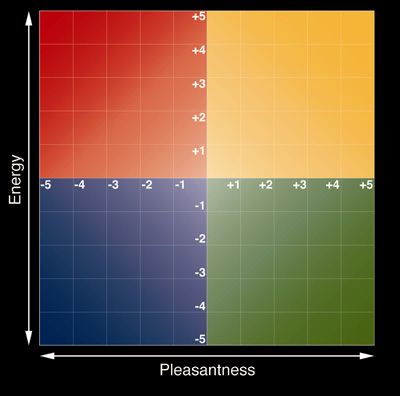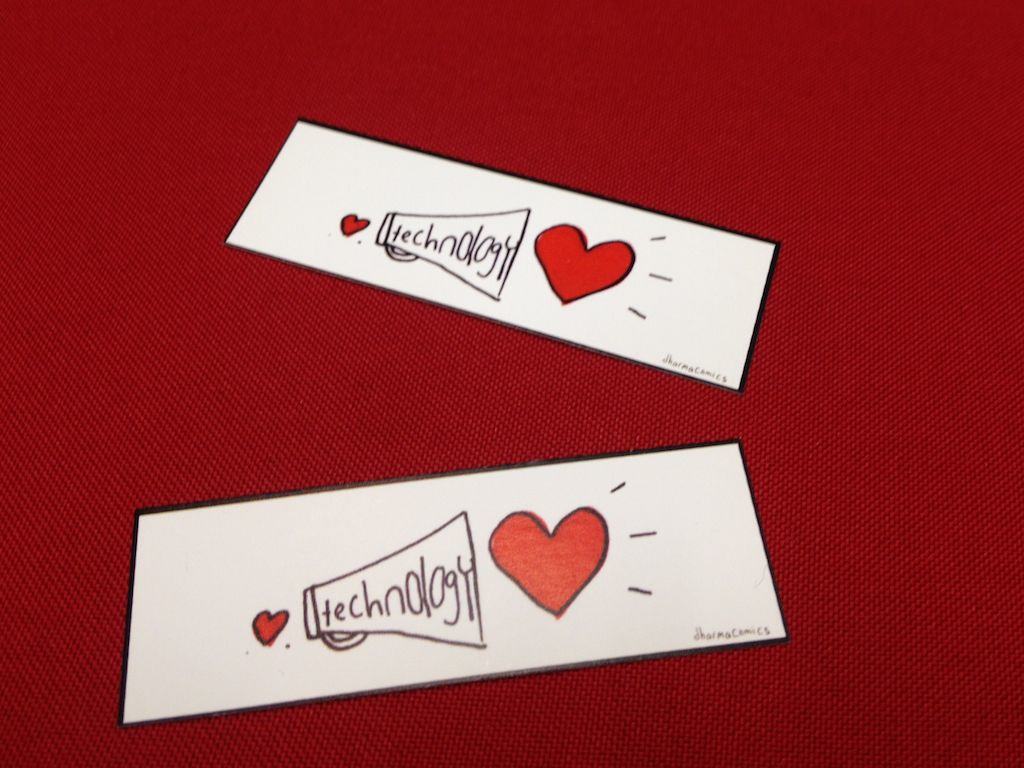Marc Brackett wants to put a Mood Meter on every smartphone. That way, in addition to helping us get through our daily lives, iPhones can make us more attuned to why and when we feel cheerful, tired or annoyed.
The director of the Yale Center for Emotional Intelligence has been working with a team from HopeLab on an app with a simple interface where users rate their energy and pleasantness using four colors and a five-point scale.
He tested it out on conference goers Stanford’s first ever Technology and Compassion conference, organized by the Center for Compassion And Altruism Research And Education. Asking for a show of hands, most participants noted they were somewhere in the green (pleasant) perhaps creeping up towards yellow (high energy).
 If you’re at all like New Yorker Brackett, you’ll frequently find yourself in the red. And that’s a not necessarily a bad thing.
If you’re at all like New Yorker Brackett, you’ll frequently find yourself in the red. And that’s a not necessarily a bad thing.
“I like being angry. It drives me to change education policy,” Brackett said. His presentation substituted a scheduled one about empathy and video games.
Despite the pinch hit, his talk resonated strongly with participants and echoed several of the ideas presented in the projects presented in a later competition.
Brackett recounted his own struggle with mood states, realizing he doesn’t like to be in the yellow (high energy, high pleasantness) after experimenting with it in a Crossfit class.
“I’m not pumped like the trainer, or the rest of the guys. I’m never going to be like that. I’m a red or blue kind of guy.”
The app (digital mood ring 2.o?) is expected to be available for public consumption by April 2014, if not sooner, in Android and iOS versions. It’ll face competition from dozens of mood tracking apps on the market – ranging from MoodyMe to The National Center for Telehealth & Technology’s T2 Mood Tracker.
While many of the ideas presented during the conference weren’t new — at least if you’ve been to a few meet-ups or tech accelerator showcases in the Bay Area — it comes at a time when the tech boom is seen as an antagonistic force rather than a one that helps change society change for the better.
When Your iPhone Becomes A Compassion Trainer
You’re going about your business on a regular workday when a text message pops up on your iPhone from an anonymous number: “Stop texting me you jerk!”
How would you answer?
If you participated in a study from the University of Michigan about empathy, there are higher chances you might text something back like “Sorry you’re having a bad day! I think you’ve got the wrong number.”
Sara Konrath, an assistant research professor of psychology at the University of Michigan, says the results of the study that used texting prompts to “train” people in compassion were not conclusive, but the follow-up done six months after the conclusion of the study with the potentially hackle-raising text shows that our phones may help smooth out the rougher edges of our personalities.
“Men in particular less likely to agree that aggression was a good thing,” Konrath said. “It increases pro-social behavior, but not necessarily empathy.”
As part of the texting research, part of the John Templeton Foundation’s Character Project, participants thumbed their way through exercises designed to test for empathy reactions. Six times a day, they reported mood, feelings of connectedness, the number of people interacted with since the last text message and several other factors. Some were prompted to text messages that were empathy boosters (“send a nice text to someone close, try to make them feel loved”) while others were asked to reflect on someone they had trouble getting along with.
Konrath says that while empathy is heritable to an extent, she likens it to a muscle we can all work on strengthening. Conference goers found the results intriguing. “I can imagine structuring peer review around this concept and helping my students approach each other’s work more constructively, with greater focus on how they can become compassionate responders,” said Alyssa J. O’Brien a lecturer in Writing and Rhetoric at Stanford.
Next up for Konrath? Trying to compare face-to-face empathy with text messages and possibly work on an app. Because we’re all different IRL.
My App Is More Altruistic Than Yours!
During the second half of the one-day conference, apps in the empathy space killed each other with kindness in a friendly competition. (Several of the speakers gave a nod to the other presenters and their ideas, opening the doors for collaboration once the gloves were off.) The 10 finalists each got a chance to tell judges and conference goers, who could vote by text message, why their idea would extend the reach of compassion with tech.

High school senior Sam Reiss was a shoe-in for first place, with a project that brings pen pals to the generation that grew up with Skype. Dubbed X-Change the World, its goals include “enhancing the cultural and global spectrum of youth throughout the world, improving the level of conversational English of our participants and building cross-cultural bridges that lead to greater global curiosity and compassion.”
The platform pairs students from the U.S. with teens in countries including Thailand, Cambodia, Laos, Tanzania and Kenya in a virtual classroom. The project, which already won second place in a national youth service challenge, walked off with the $10,000 prize. Two other projects won $5,000 each plus a consultation with a a growth capital fund exec and a chance to meet the Dalai Lama. They included a taxi game called Compassion in Motion and wellness tracker SeekChange, which includes Siri-like component called Dara to track your moods and activities.


